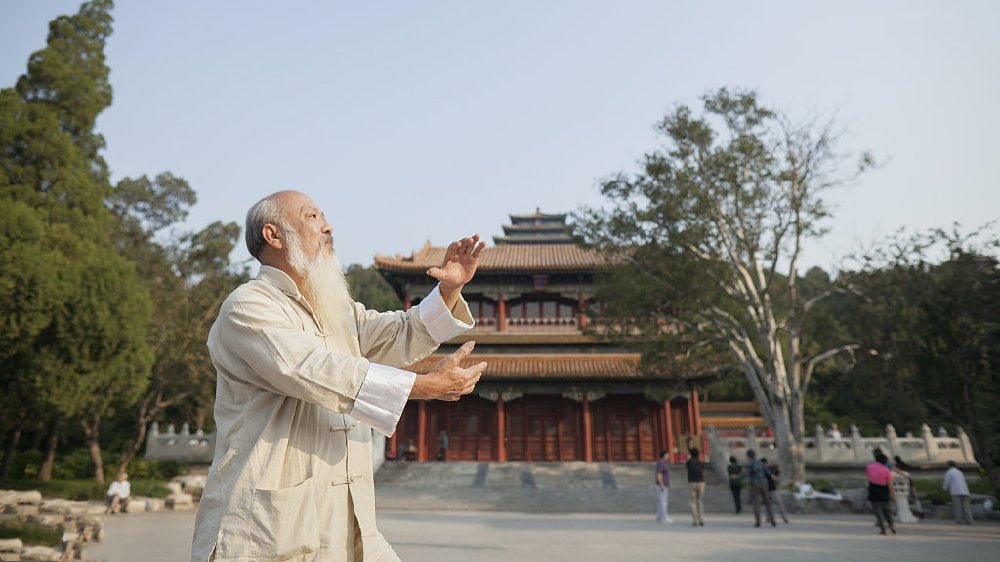Introduction to Baduanjin Qigong
The Baduanjin Qigong is a self-contained and complete fitness practice that originated during the Northern Song Dynasty, with a history spanning over 800 years. The ancient Chinese likened this set of exercises to “brocade,” symbolizing something vibrant, beautiful, and elegant, reflecting the graceful and flowing nature of the movements. Baduanjin has long been regarded as highly effective for promoting health and well-being, with meticulously arranged and perfectly executed movements. In modern times, both the content and the names of the exercises have evolved, but the practice still consists of eight distinct movements, hence the name “Baduanjin,” which translates to “Eight Pieces of Brocade.” The practice requires no equipment, can be performed in any space, is simple to learn, time-efficient, and highly effective. It is suitable for people of all ages, helping the underweight to build strength and the overweight to lose weight.
Characteristics of Baduanjin Qigong
Gentle and Slow, Smooth and Continuous
- Gentle: Movements should be relaxed, unrestrained, and executed with ease, embodying grace and elegance.
- Slow: Movements should be performed with a stable center of gravity, distinct shifts between solid and empty stances, and a light, steady pace.
- Smooth: Movements should follow curved paths, avoiding sharp angles or direct lines, in accordance with the natural bending of the body’s joints. The waist and spine act as the central axis, guiding the limbs in coordinated, seamless motion.
- Continuous: The transitions between different postures and the alternation between solid and empty stances should be fluid, without any breaks or interruptions.
Combining Relaxation and Tension, Movement and Stillness
- Relaxation: Muscles, joints, the nervous system, and internal organs should be relaxed during practice. Under the conscious control of the mind, one gradually achieves a state of soft breathing, calmness, and physical relaxation. This relaxation should be deepened without slackening, maintaining correct posture throughout.
- Tension: Appropriate force should be applied during practice, executed slowly, particularly during the transition from the end of one movement to the beginning of the next.
- Movement: Movements should be light, lively, coordinated, and natural, guided by the mind’s intent.
- Stillness: During the pauses in movements, one should achieve a sense of stability and calmness.
Harmonizing Spirit and Form, Integrating Energy
- Spirit: Refers to the mental state and conscious activities of the practitioner, as well as the physical expression guided by this consciousness. As the saying goes, “The spirit is the master of form; the form is the dwelling place of the spirit.”
Key Principles of Practice
Relaxation and Naturalness
- Relaxation and Naturalness: This is the fundamental principle of practice. Relaxation refers to both mental and physical relaxation. The term “naturalness” should not be misunderstood as “letting things take their course,” but rather as following the natural laws of Dao.
Accuracy and Flexibility
- Accuracy: This refers to performing the movements with correct posture and technique, in line with the prescribed standards.
- Flexibility: Practice should be adapted to the individual’s condition, with adjustments in movement amplitude, posture height, force applied, frequency of practice, mental focus, and breathing regulation.
Combining Practice and Cultivation
- Practice: This refers to the process of integrating physical movements, breath regulation, and psychological adjustment.
- Cultivation: Through consistent practice, one achieves a state of physical relaxation, soft breathing, and sustained mental focus.
Progression
- Through regular and sustained practice, the accuracy of postures and methods improves, movements become more fluid and controlled, and the understanding of the key principles deepens over time.
Related Kung Fu
Ba Duan Jin
This ancient Chinese fitness method features eight simple movements that boost health and prevent illness. It’s easy to learn, time-efficient, and effective for people of all ages.


